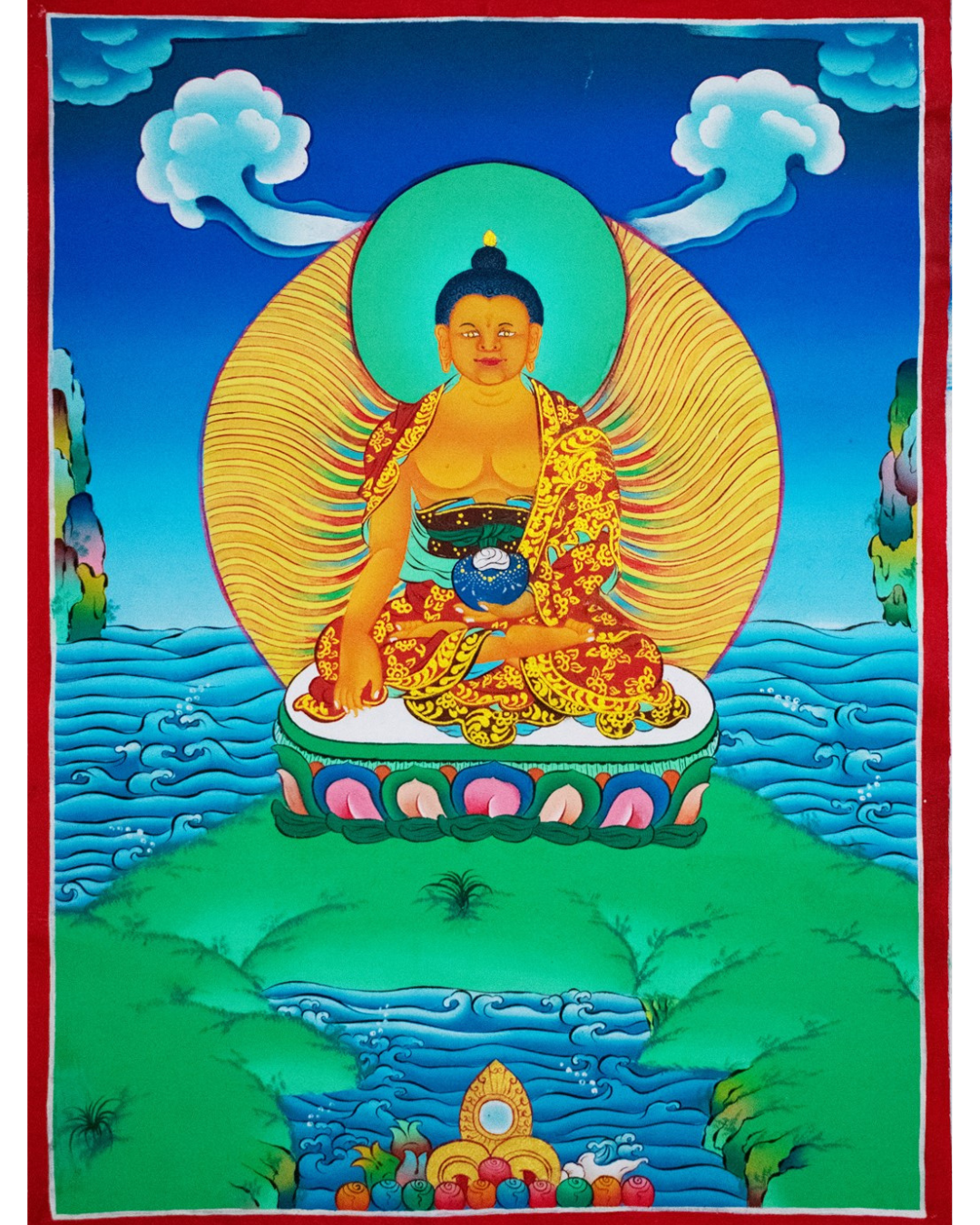Darjeeling Connection
Shakyamuni, Siddharta Gautama Thangka
Shakyamuni, Siddharta Gautama Thangka
Couldn't load pickup availability
Shakyamuni, also known as Gautama Buddha, Siddhartha Gautama, is the historical Buddha, founder of the Buddhist philosophy and often referred to as “the Buddha”. He lived in ancient India around 2,500 years ago and is revered as the "Awakened One" or "Enlightened One." Shakyamuni's teachings form the foundation of Buddhism, and he is considered the supreme teacher who attained enlightenment and shared his insights with humanity.
Painted in shades of gold or beige and wearing monastic robes, he is seated atop a lotus throne on which are symbolically placed the sun and moon. His lotus seat symbolizes the act of living in this world without being soiled by its imperfections. The sun represents “prajna” or wisdom. The moon represents “upaya” or the willful means of compassion.
The left hand is in the dhyani or meditation mudra. Whilst the right hand is in the Bhumisparsa mudra translated in english to “taking the earth as a witness” which refers to a particular episode of the Buddha’s Life thangka detailing his life story.
Thangkas featuring Shakyamuni serve as a visual representation of his teachings and are used for meditation and as objects of veneration in Buddhist practices. They remind practitioners of the core principles of Buddhism and the path to enlightenment as taught by the historical Buddha, Shakyamuni.
Limited Availability: Due to the meticulous craftsmanship involved in creating each thangka, we have limited stock available. Don't miss the opportunity to own this exceptional work of art and spirituality
Here are some key aspects of Shakyamuni and the common iconography associated with thangkas depicting him:
- Appearance: Shakyamuni is typically depicted as a human figure with a serene and compassionate expression. He is often shown with a peaceful smile, symbolizing the inner peace and wisdom he attained through enlightenment.
- Hand Gestures (Mudras): The most common mudra associated with Shakyamuni is the Dharma teaching mudra, also known as the "Bhumisparsha mudra." In this gesture, the right hand is extended downward, with fingers touching the earth. This represents the moment of his enlightenment when he called upon the earth as a witness to his awakening.
- Robes: Shakyamuni is depicted wearing monastic robes, symbolizing his renunciation of worldly attachments and his commitment to a life of spiritual practice.
- Ushnisha: The top of Shakyamuni's head often has a cranial bump called the ushnisha, which represents his heightened spiritual awareness and wisdom.
- Urna: A small tuft of hair between his eyebrows, known as the urna, symbolizes his inner eye or third eye, representing insight and clarity of vision.
- Earlobes: Shakyamuni's elongated earlobes are a reminder of his royal origins. Before his renunciation, he wore heavy earrings, which were removed as a sign of his renunciation of worldly wealth and attachments.
- Lotus Seat: Shakyamuni is typically seated on a lotus throne, which represents purity and enlightenment. The lotus is a symbol of spiritual growth and emergence from the muck of worldly existence.
- Bodhi Tree: Some thangkas may include the bodhi tree, the sacred fig tree under which Shakyamuni attained enlightenment. The bodhi tree is a symbol of his awakening.
- Deer: Shakyamuni is often depicted with a deer nearby or at his feet, as he gave his first sermon in the Deer Park at Sarnath after attaining enlightenment.
- Wheel of Dharma: The Wheel of Dharma (Dharmachakra) symbolizes the Buddha's first teaching on the Four Noble Truths and the Eightfold Path. It represents the continuous cycle of birth, suffering, and rebirth and the path to liberation from this cycle.
.
Care Instructions
Care Instructions
Materials
Materials
Specially treated cotton canvas; Paints are a mixture of acrylic, gold dust, and stone pigments
Dimensions
Dimensions
17.75 x 13.25 inch (l x b)
Country of Origin
Country of Origin
India


